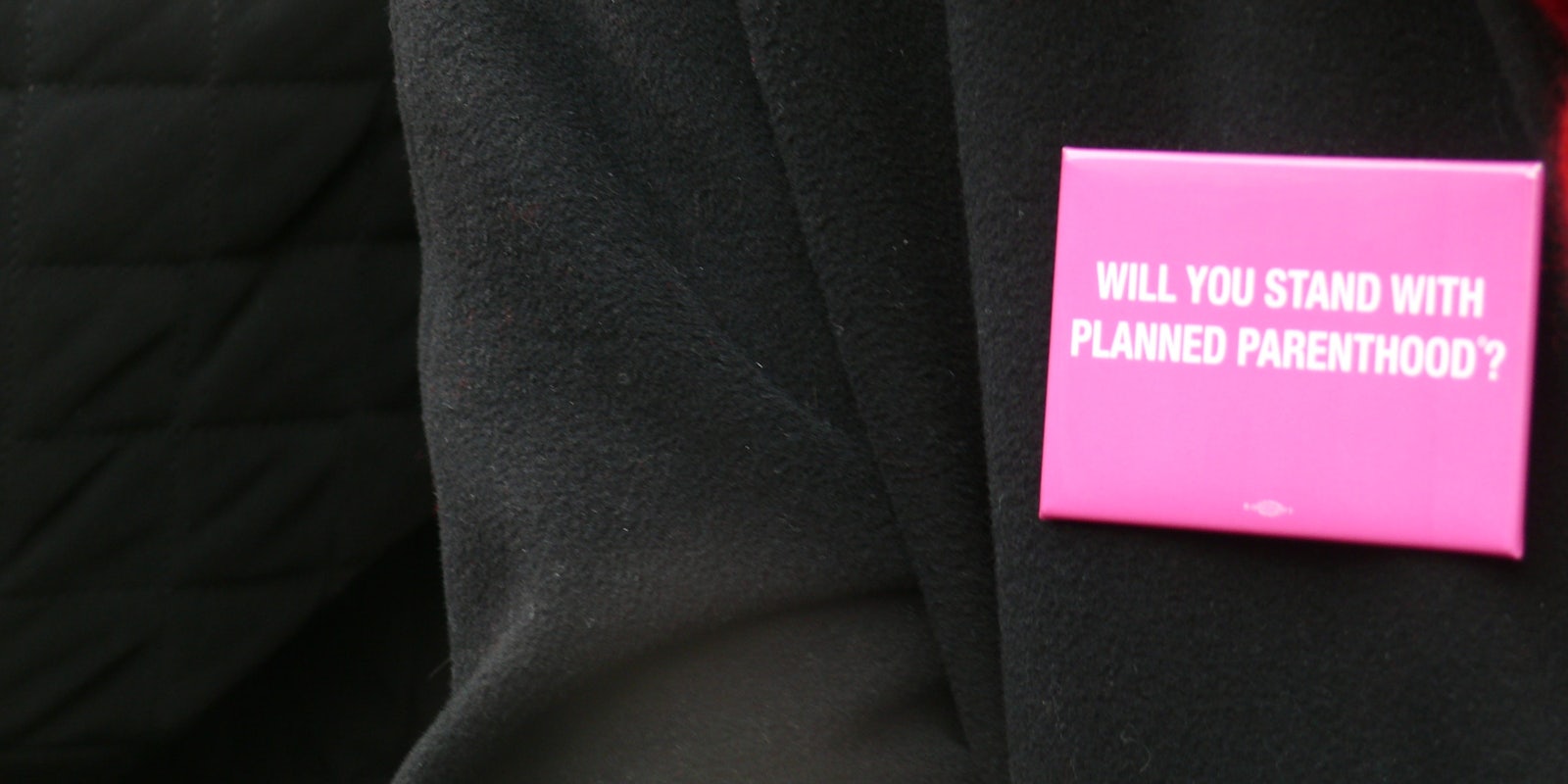As Planned Parenthood stares down a future without federal funding, we began to wonder: Could Americans offset that portion of the nonprofit’s budget with donations? Short answer, yes, but let’s break it down by the numbers.
For the last 47 years—since the Nixon administration—Planned Parenthood has received federal funding to support its services like breast cancer screenings, pap smears, contraception, STD screenings, and pregnancy testing and family planning. As of 2014, that federal funding was to the tune of $528,400,000. In 2015, that number grew to $553,700,000.
Planned Parenthood also provides abortion services, though those only comprise about 3 percent of Planned Parenthood’s services overall (contraception accounts for 31 percent of its services, and STI/STD screenings account for another 45 percent, according to the latest annual report). Furthermore, by law, none of Planned Parenthood’s government funds can go toward abortions, so the number of federal dollars being spent on abortion services at Planned Parenthood is precisely zero.
Nevertheless, President Donald Trump offered Monday that Planned Parenthood could keep its federal funding if it agreed to stop providing abortions. Planned Parenthood promptly turned down that offer. As Planned Parenthood Federation of America Executive Vice President Dawn Laguens told the New York Times: “Offering money to Planned Parenthood to abandon our patients and our values is not a deal that we will ever accept. Providing critical health care services for millions of American women is nonnegotiable.”
So what does a future without that half a billion dollars look like for the organization that is the sole health provider for millions of men and women?
By the most basic math, if every person living in America—of which there are approximately 323 million, according to census data—donated $1.71 to Planned Parenthood, the nonprofit could recoup its federal funding budget in a day.
But let’s be more realistic about Planned Parenthood’s donor base. Rule out the roughly 23 percent of America who’s under the age of 18, and you’re down to 249,131,312 eligible donors.
Cut out the 46 percent of Americans who voted for Trump, too. While multiple accounts have surfaced of Trump voters who regret their choice for president, many after realizing Obamacare and the Affordable Care Act were one in the same, it’s fair to assume many agree with his policies and would side with him on this too. That takes it down to 134,530,908 potential donors, so each one would need to donate $4.12—in addition to whatever they might already give—to keep Planned Parenthood’s budget bottom line the same.
Even if all 13.5 percent of persons living in poverty exist in the remaining pool of eligible donors, that still leaves 90,908,694 eligible donors—adults who live above the poverty line and didn’t vote for Trump. Each of those people would need to donate $6.10 to offset Planned Parenthood’s loss of federal funding in a year. Call it $7 to account for a little growth between 2015 (the latest Planned Parenthood annual report available) and 2017. Seven dollars apiece from almost 91 million people gives Planned Parenthood about $636 million to work with. Not too shabby.
Is that achievable? Maybe, maybe not. In 2015, Planned Parenthood only cited 518,000 “active individual contributors,” which is a good way off from the 91 million we worked out above. If only those half million donors had to split the bill, it quickly starts looking more like a tab of $1,069 per person per year, which is unsustainable at best.
But look to the American Civil Liberties Union, which saw a massive spike in donations after Trump’s initial travel ban went into effect in January. The ACLU received $24 million in donations in a single weekend, which is almost six times more than it typically gets in a given year. Certainly, many worthy organizations are vying for every donate-able dollar folks are willing to part with, but news like a complete removal of Planned Parenthood from the federal budget could be just the incentive people need to get off the fence about donating.


